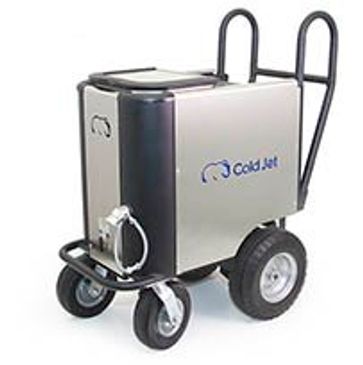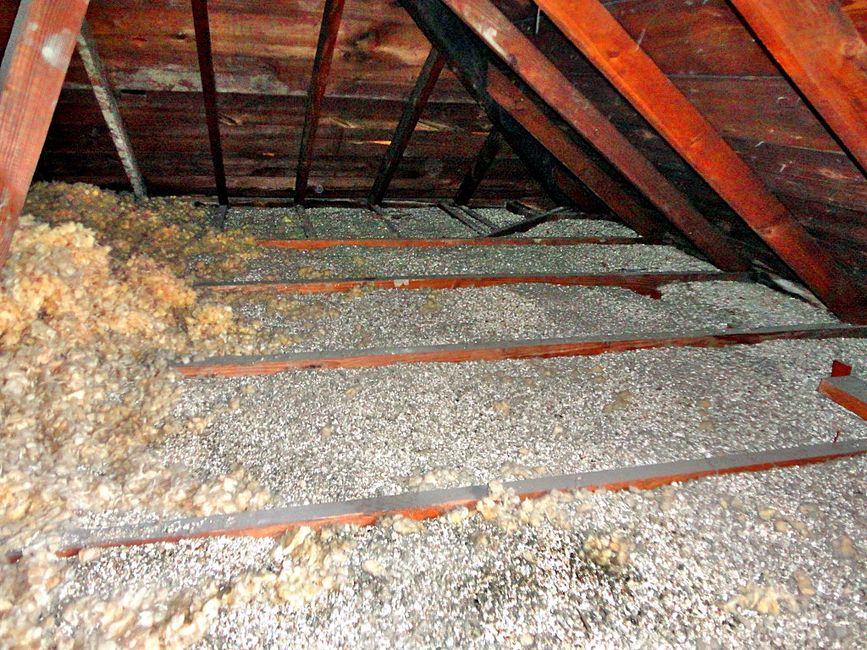Welcome to GB Environmental Services (Niagara) Ltd
About Us
We have the knowledge and experience
.jpg/:/cr=t:0%25,l:0%25,w:100%25,h:100%25/rs=w:365,h:365,cg:true)
Small enough to handle all your residential abatement needs, experienced enough to handle large industrial abatement projects.
New Service

GB Environmental has added Dry Ice Blasting to our list of Environmental Services
Areas we service
Providing Environmental Services to the Niagara Region and surrounding area since 1990
Subscribe
Sign up to hear from us about specials, sales, and events.
Contact Us
Drop us a line!
Hours
Open today |
Asbestos
What is asbestos?
Asbestos is a natural fibrous mineral whose properties make it strong enough to resist high temperatures, chemical attack and friction wear. Its fibrous properties allow it to be woven into cloth, spun into yarn or braided into rope.
The versatility and durability of this product makes it difficult to match.
What has asbestos been used for?
Asbestos has been used in more then 3000 different construction material and manufactured products.
Asbestos has been in use for more then 4000 years, the ancient Greeks wove it into oil lamp wicks, and during the Industrial Revolution asbestos was used to insulate hot engines, boilers and piping.
Some common items in older homes that may contain asbestos are: the insulating jacket for older style boilers, pipe insulation on boiler lines, vinyl floor tiles or sheeting, decorative spray-on ceiling finishes and cement board siding.
Should I leave the asbestos alone, repair it, or remove it?
There are several options an asbestos abatement professional may recommend for dealing with asbestos in your home. Which method is the most appropriate, depends upon the condition and location of the asbestos material.
If the asbestos-containing material is damaged or deteriorated, the professional may recommend that it be removed or repaired. Planned or unplanned renovation activities may also require removal if asbestos-containing material will be disturbed as a result of the renovation. If materials are intact, but have a high potential for being damaged or disturbed, it may be desirable to remove these materials to avoid inadvertent exposures.
If the asbestos-containing material is in good condition and not likely to be disturbed or misused, the professional may suggest a management program to minimize or prevent exposure to asbestos fibers.
What are the alternative methods for dealing with asbestos?
Removal
• Only a professional asbestos abatement contractor should perform asbestos removal. The contractor should follow the following steps:
• The contractor should enclose the work area in a plastic glove-bag (for small jobs) or in plastic sheets attached to the floor and ceiling with duct tape. The work area should be enclosed completely, including the floor, ceiling, and any air vents. Everything inside the area should be washed, and then vacuumed with a special asbestos vacuum called a high-efficiency particulate air or HEPA vacuum. Furniture should not be left in the work area. If it cannot be removed, it must be sealed in plastic.
• Any ventilation ducts or vents in the work area must be sealed off. Special air systems designed for asbestos work should be used for most situations. These systems reduce the air pressure inside the work area so that no asbestos fibers can escape.
• No one should go into the work area without proper equipment (including approved respirators), protective clothing, and training. No one should leave the work area unless they have taken the proper steps to make sure that the asbestos fibers will not be taken out with them. This means that any equipment or clothing in the work area must be cleaned or taken off before leaving the area. The work-site should be kept secure so that children and pets cannot get into it at anytime.
• The asbestos material must be kept wet during removal to reduce the amount of asbestos fibers entering the air. As the asbestos is removed, it should be placed in two-6 mil (heavy duty)--plastic bags, that are sealed and labeled as required by disposal regulations. For larger jobs, asbestos waste may be placed in specially designed drums or boxes, which must also be labeled.
Asbestos Management Program
• Removal of asbestos-containing materials is the only permanent solution to an asbestos problem. However, if the asbestos is in good condition and not likely to be disturbed, there are several methods of managing it in place:
• Encapsulation: spraying the asbestos with a sealant (like paint) can temporarily keep the asbestos fibers in their original material. As long as the original bond remains in the material, encapsulation may be used.
• If the material is crumbling and deteriorating, encapsulation can do more harm than good. This is because the sealant pulls down the loosened asbestos material and can allow additional fibers to be released into the air. Encapsulating with a penetrating sealant can also make future removal of the asbestos-containing material more difficult. Since the encapsulant may begin to deteriorate, it must be regularly inspected.
• Enclosure: isolating asbestos material from potential damage by using a sturdy, airtight barrier (i.e. Using heavy poly sheeting to create an enclosure/tent around the area) a suitable, but temporary remedy for some asbestos problems.
• Repair: for minor damaged areas--small holes or tears in pipe insulation cover with encapsulating lagging cloth and coating.
• Maintenance: if asbestos materials are left in place, they should be labeled and monitored with the ultimate goal of preventing fibers from entering the air. You must take precautions around the house to avoid exposure to asbestos and inspect the material regularly to see if conditions change (either the use of the area or the condition of the material due to air movement, vibration, punctures, water damage, etc.) which warrant further action.
• Enclosure, encapsulation, and even spot repairs should be performed by someone who is trained in handling asbestos, and may require enclosure of the work area (to prevent possible contamination of the home) and use of protective clothing and approved respirators.
What are the disposal requirements for asbestos?
All asbestos waste and the disposable clothing, filters, equipment, and building materials used by a commercial asbestos abatement company which are not to be cleaned and reused, must be disposed of as asbestos waste. The material must be placed in double plastic bags, labeled as asbestos and disposed of according to local and provincial regulations.

VERMICULITE
What is Vermiculite?
Vermiculite is a volcanic mineral that is fire-resistant and has strong insulation properties. The Environmental Protection Agency notes that when vermiculite is heated, it expands into worm-like or accordion-like pieces and may release asbestos fibres. Vermiculite has been used in various industries including construction, agricultural and horticultural markets for more than 80 years.
Up until 1990 approximately 70% of the world’s supply of vermiculite came from the Libby, Montana mines, Tremolite asbestos was identified as a contaminate within the Libby deposit.
Although the mine owners took increasing measures to reduce the asbestos content in their product, it is likely that most of their production contained at least a trace of free asbestos fiber.
Vermiculite was once touted as a miracle mineral: it's fire-resistant and has strong insulation properties. It was incorporated into home insulation products branded Zonolite Attic Insulation in Canada and installed in hundreds of thousands of homes across the country. In fact, in the late 1970s and early 1980s, the federal government even offered a grant to people who installed products including Zonolite in their homes.
If you suspect you have vermiculite insulation, you should hire an asbestos removal professional before proceeding. Health Canada also suggests sealing cracks and holes in the window frames, door frames and walls. If you suspect Zonolite was installed in your attic, seal up any cracks in the ceilings of the rooms below.
If you want to have a sample analyzed, it is suggested that you hire a trained consultant or contractor to collect the sample and get it analyzed at an accredited laboratory. Several samples should be taken since asbestos concentration may vary from one vermiculite piece to another.
Also, the analytical laboratory should be looking for traces of asbestos, even below 0.1 per cent on a weight-to-weight basis. Normally a concentration of less than 0.1 per cent is considered safe. But vermiculite is extremely friable — easily crumbled — and can release a very high number of asbestos fibres in the air when disturbed even if the concentration of asbestos is considered very low.
CBC News Report "Deadly Dust"
Find out moremould
What is Mould?
Moulds are microscopic fungi. Fungi are highly adapted to grow and reproduce rapidly, producing spores and mycelia in the process.
That fuzzy black growth on wet windowsills is mould. Paper or fabrics stored in a damp place get a musty smell that is due to the action of moulds.
Over 270 species of mould have been identified as living in Canadian homes
What makes moulds grow?
Moulds will grow if we provide them with moisture and nutrients. High moisture levels can be the result of water coming in from the outside, through the floor, walls or roof; or from plumbing leaks; or moisture produced by the people living in the home, through daily activities like bathing, washing clothes or cooking. Water enters the building when there is a weakness or failure in the structure. Moisture accumulates within the home when there is not enough ventilation to expel that moisture.
Why are moulds a concern?
Damage to materials is one concern. Materials get stained or discolored, and over time they are ruined. Continued mould growth can be indicative of moisture conditions favorable for growth of fungi that cause wood rot and structural damage.
When moulds are growing inside the home, there may be health concerns. Moulds release chemicals and spores.
Health experts indicate that, depending on the type of mould present in a home, the amount and degree of exposure, and the health condition of the occupant, the health effects of mould can range from being insignificant to causing allergic reactions and illness.
Pregnant women, infants, the elderly and those with health problems, such as respiratory disease or a weakened immune system, are more at risk when exposed to mould. Consult your family physician if you believe there is someone who may be at risk.

Copyright © 2019 GB Environmental Services (Niagara) Ltd - All Rights Reserved.